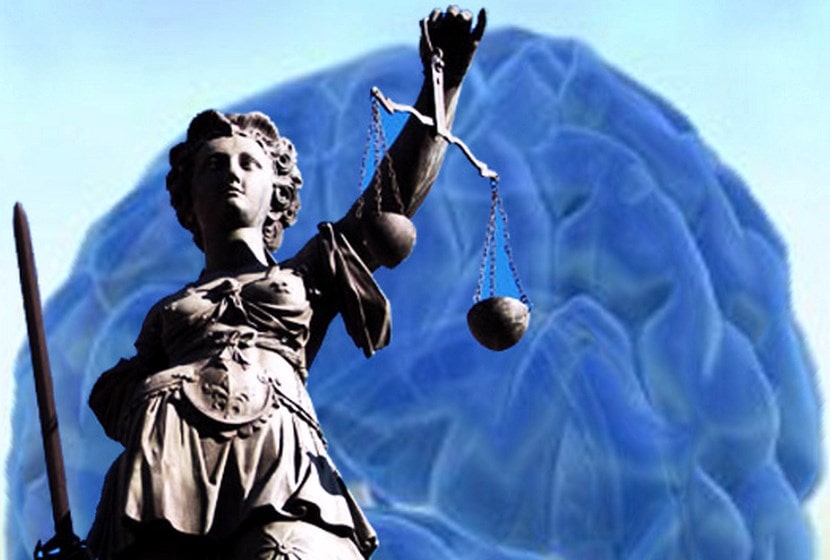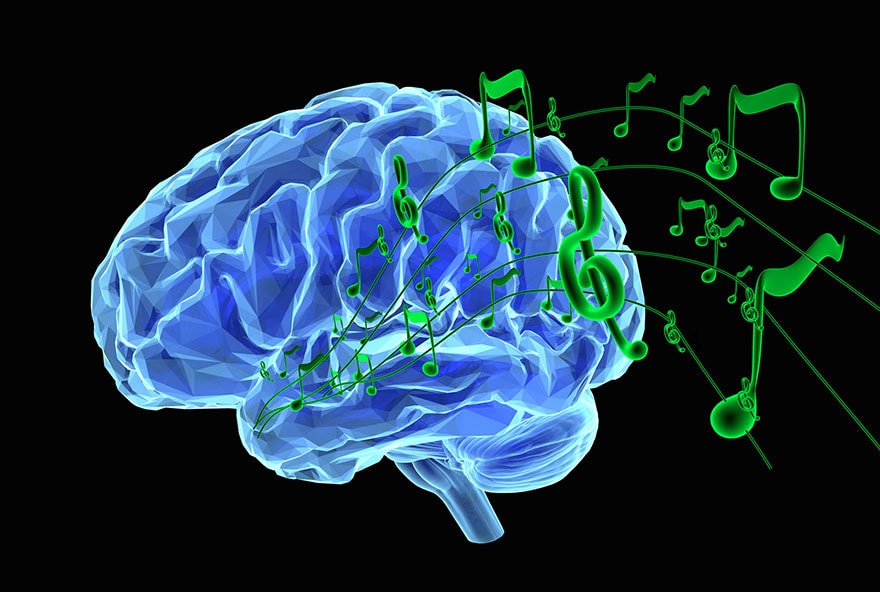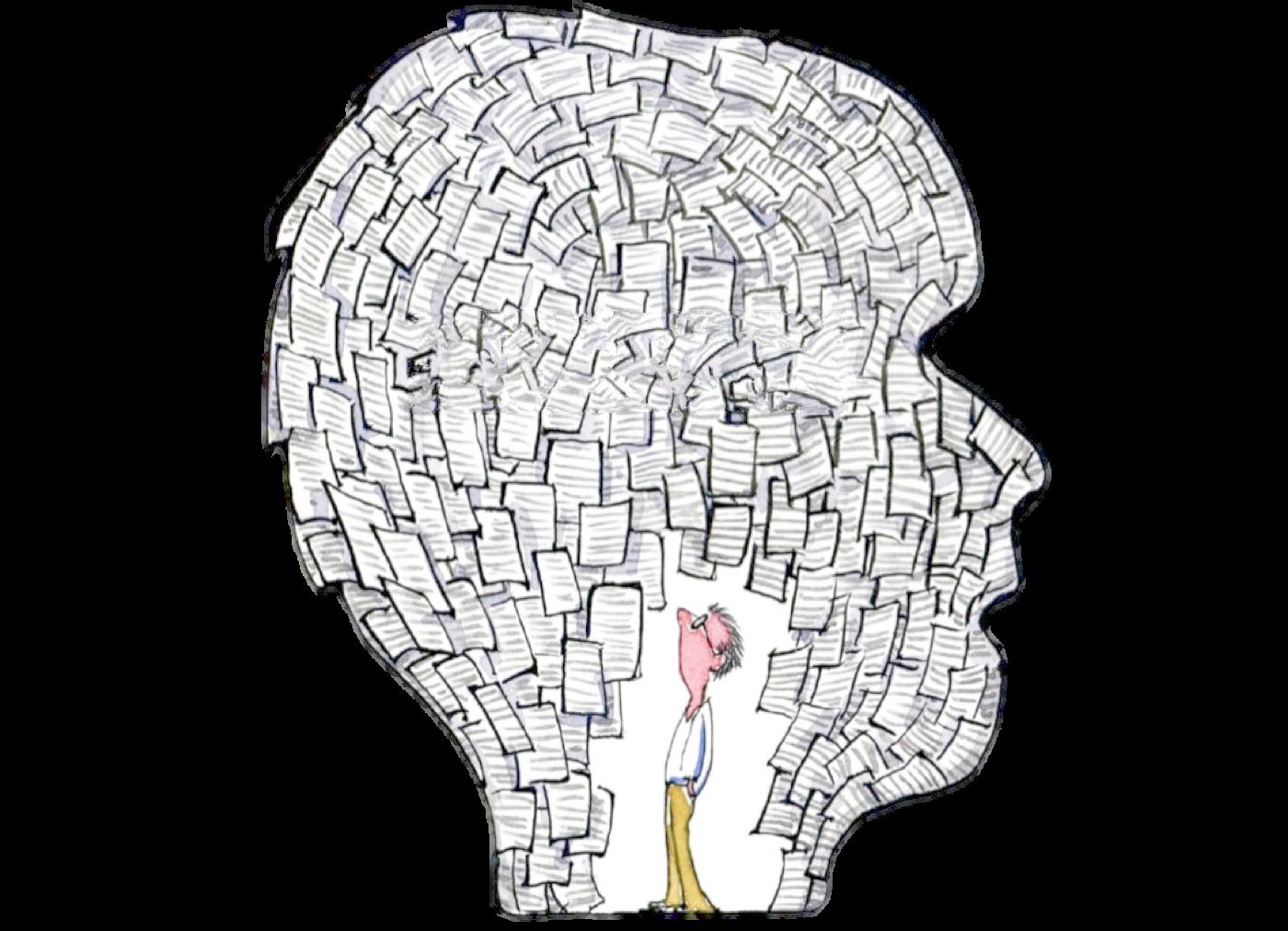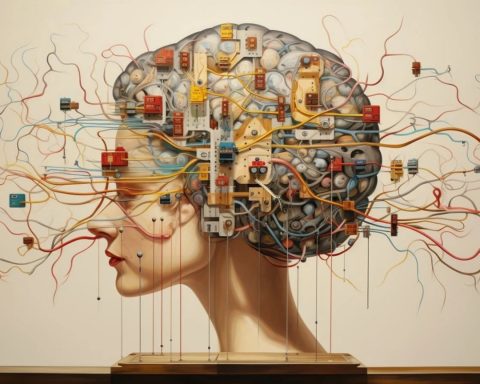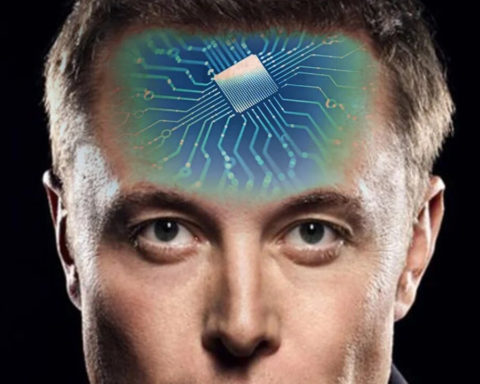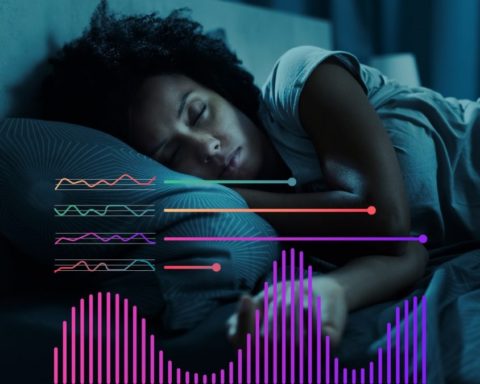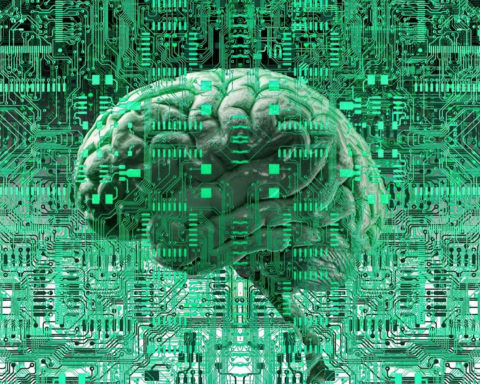Au XIXe siècle, Cesare Lombroso fondait la criminologie scientifique. Il prétendait repérer les criminels à partir des traits anatomiques du visage et du crâne. La science venait au secours de la justice…. Où en est-on au XXIe siècle ? La même quête anime toujours certains biologistes, en particulier aux Etats-Unis où la lutte contre la délinquance et le terrorisme est une priorité nationale. Certes, le vocabulaire et les méthodes ont changé. On ne parle plus de criminalité mais de psychopathie anti-sociale, tandis que l’imagerie cérébrale a remplacé l’analyse des faciès et des bosses du crâne.
L’IRM dans les tribunaux
 En Inde, le procès d’une jeune femme, Aditi Sharma, a défrayé la chronique en 2008. Accusée d’avoir empoisonné son fiancé, alors qu’elle clamait son innocence, elle a été soumise à l’épreuve d’un détecteur de mensonge basé sur l’activité électrique de son cerveau. L’électroencéphalogramme montrait une réaction identique aux phrases « j’ai acheté de l’arsenic » , « le ciel est bleu » , « j’ai eu une liaison avec Udit « . Les experts en ont conclu que l’achat du poison est un fait établi au même titre que la couleur du ciel. L’argument a été retenu comme preuve à charge et la jeune fille condamnéee à la détention à perpétuité. Par chance, la publication de l’affaire dans le New York Times ainsi que les nombreuses contestations de la validité de l’épreuve ont permis l’annulation de la condamnation. La Cour suprême de l’Inde a néanmoins maintenu l’autorisation des détecteurs de mensonge à condition que l’accusé(e) donne son consentement. (Illustration : peinture de Fabrice Lemarois)
En Inde, le procès d’une jeune femme, Aditi Sharma, a défrayé la chronique en 2008. Accusée d’avoir empoisonné son fiancé, alors qu’elle clamait son innocence, elle a été soumise à l’épreuve d’un détecteur de mensonge basé sur l’activité électrique de son cerveau. L’électroencéphalogramme montrait une réaction identique aux phrases « j’ai acheté de l’arsenic » , « le ciel est bleu » , « j’ai eu une liaison avec Udit « . Les experts en ont conclu que l’achat du poison est un fait établi au même titre que la couleur du ciel. L’argument a été retenu comme preuve à charge et la jeune fille condamnéee à la détention à perpétuité. Par chance, la publication de l’affaire dans le New York Times ainsi que les nombreuses contestations de la validité de l’épreuve ont permis l’annulation de la condamnation. La Cour suprême de l’Inde a néanmoins maintenu l’autorisation des détecteurs de mensonge à condition que l’accusé(e) donne son consentement. (Illustration : peinture de Fabrice Lemarois)
Aux Etats-Unis, l’utilisation judiciaire d’examens relatifs à l’anatomie et au fonctionnement du cerveau date d’une vingtaine d’années, en lien avec l’émergence des nouvelles techniques d’imagerie cérébrale. Un des premier procès du genre est celui de John Hinckley, accusé de tentative d’assassinat du Président Ronald Reagan en 1981. La défense a présenté un scanner du cerveau de Hinckley montrant un élargissement des sillons du cortex, comme on en trouve parfois chez certains schizophrènes. Bien que l’observation n’ait jamais été confirmée, l’argument a porté car Hinckley a été déclaré non coupable pour cause de démence.
Dans les années 1990, le neurologue Adrian Raine de l’université de Californie a témoigné en tant qu’expert dans un procès pour viol et meurtre. L’imagerie par IRM du cerveau de l’accusé montrait une réduction d’activité du cortex préfrontal supposée expliquer son incapacité à inhiber ses pulsions. Il a ainsi pu échapper à la peine de mort. En 2005, la Cour Suprême a pris en compte la neurobiologie dans sa décision d’interdire la peine de mort en dessous de l’age de 18 ans. L’Association Américaine de Psychiatrie avait fait valoir que les adolescents n’auraient pas le contrôle total de leur impulsivité et de leurs émotions car, d’après l’IRM, leur cortex préfrontal n’est pas encore totalement mature.
On dénombre aux Etats-Unis 130 procès au cours desquels des spécialistes de l’imagerie cérébrale ont été convoqués pour éclairer les juges et les jurés sur l’état cérébral des accusés et des témoins. Le sujet des applications juridiques des neurosciences est devenu une thématique de recherche à part entière dénommée « Neuroloi » (Neurolaw). Elle est l’objet d’importants programmes de financement associant les universités et l’administration américaine.
En France, pour évaluer la responsabilité pénale d’un accusé, le juge nomme des psychiatres et des psychologues qui appuient leurs expertises avant tout sur des entretiens et très peu sur l’imagerie du cerveau. Mais pour combien de temps encore ? Le modèle américain tend à s’imposer avec la perspective de voir les neurosciences suppléer le médecin clinicien dans l’évaluation de la responsabilité et de la dangerosité d’un prévenu.
A la recherche des zones cérébrales du crime
 Violence, agressivité, atteinte à l’ordre moral, criminalité, terrorisme… Tous ces comportement déviants auraient-ils leur origine dans le cerveau ? Pour le savoir, la méthode de choix est l’imagerie par IRM qui permet de voir le cerveau en marche, sans avoir à ouvrir la boite crânienne. Le nombre de publications sur ces thèmes explose, principalement aux Etats- Unis. De 70 articles publiés de 1990 à 2000, on est passé à 350 de 2000 à 2008.
Violence, agressivité, atteinte à l’ordre moral, criminalité, terrorisme… Tous ces comportement déviants auraient-ils leur origine dans le cerveau ? Pour le savoir, la méthode de choix est l’imagerie par IRM qui permet de voir le cerveau en marche, sans avoir à ouvrir la boite crânienne. Le nombre de publications sur ces thèmes explose, principalement aux Etats- Unis. De 70 articles publiés de 1990 à 2000, on est passé à 350 de 2000 à 2008.
Le laboratoire dirigé par Adrian Raine est spécialisé dans le domaine. Son objectif est d’étudier les bases neuronales des comportements de type antisocial, agressif et criminel « pour mettre au point de nouveaux traitements et des programmes de prévention pour ces maladies très coûteuses à la société ».
Dans sa publication de 2008, Raine passe en revue les travaux sur les particularités anatomiques des cerveaux de psychopathes violents. Le problème de son interprétation reste entier. En effet, jusqu’à présent, aucune donnée scientifique ne permet d’établir une relation de causalité entre une réduction d’épaisseur du cortex et un comportement déviant. En raison des propriétés de plasticité du cerveau, on ne peut pas déterminer l’origine de variations dans la structure du cortex. L’IRM de l’anatomie du cerveau n’apporte pas la peuve d’une origine biologique des comportements agressifs.
(1). Plusieurs études en IRM ont montré une légère réduction de l’épaisseur du cortex cérébral dans les régions préfrontale et temporale. Il faut noter que ce phénomène n’est en rien spécifique des criminels. On a pu l’observer également chez des sujets alcooliques, drogués et chez certains patients épileptiques.
Comment fonctionne le cerveau des criminels ?
 Pour tenter de répondre à cette question, des chercheurs ont utilisé l’IRM fonctionnelle (IRMf) qui permet d’analyser le cerveau en activité. Plusieurs études ont été faites chez des psychopathes auteurs d’actes de violence et qui étaient suivis dans les institutions psychiatriques après avoir purgé leurs peine (2). La plupart des tests d’IRMf consistait à analyser les activités cérébrales en réponse à la présentation de photos de visages avec des expressions différentes. Ces photos sont issues d’une base de données couramment utilisée par les psychologues, et dénommée « International Affective Picture Set ». On y trouve des photos qui évoquent des émotions qualifiées de positives (couples amoureux, petits chiens, cornets de glace), neutres (maison, fourchette, livre) et négatives (corps mutilés, chiens méchants, blessés dans des accidents de voiture).
Pour tenter de répondre à cette question, des chercheurs ont utilisé l’IRM fonctionnelle (IRMf) qui permet d’analyser le cerveau en activité. Plusieurs études ont été faites chez des psychopathes auteurs d’actes de violence et qui étaient suivis dans les institutions psychiatriques après avoir purgé leurs peine (2). La plupart des tests d’IRMf consistait à analyser les activités cérébrales en réponse à la présentation de photos de visages avec des expressions différentes. Ces photos sont issues d’une base de données couramment utilisée par les psychologues, et dénommée « International Affective Picture Set ». On y trouve des photos qui évoquent des émotions qualifiées de positives (couples amoureux, petits chiens, cornets de glace), neutres (maison, fourchette, livre) et négatives (corps mutilés, chiens méchants, blessés dans des accidents de voiture).
Les résultats de ces expériences sont mitigés. Certaines études montrent des activités différentes entre psychopathes et témoins, uniquement lors de la présentations de photos émotionnellement négatives. D’autres études montrent des activations quelque soit le contenu émotionnel. En général, les variations d’activités sont localisées dans le cortex préfrontal et l’amygdale. Cela n’a rien d’étonnant car ces régions sont mobilisées dans les fonctions cérébrales qui impliquent un couplage entre processus cognitifs et affectifs. Elles s’activent tout autant à la présentation de scènes de malheur ou de bonheur, de violence ou d’amour. On remarquera que les tests d’IRM se déroulent dans des conditions de laboratoire qui n’ont rien à voir avec la réalité de la vie. De plus, la plupart des expériences sont réalisées sur un faible nombre de sujets, en général de 10 à 40, ce qui rend les résultats difficilement généralisables. Jusqu’à présent, on ne dispose d’aucun argument solide qui permette d’affirmer qu’un dysfonctionnement cérébral ou une anomalie anatomique puisse être responsable de comportements violents ou criminels.
L’IRM pour le meilleur et pour le pire
 Un pas énorme dans nos connaissances du cerveau a été franchi grâce aux techniques d’IRM. On dispose à présent d’un outil d’exception qui permet d’observer à la fois la structure et le fonctionnement du cerveau vivant. Toute une cartographie de régions activées dans les fonctions sensorielles, motrices, cognitives a été dévoilée. Les applications en clinique humaine sont immenses.
Un pas énorme dans nos connaissances du cerveau a été franchi grâce aux techniques d’IRM. On dispose à présent d’un outil d’exception qui permet d’observer à la fois la structure et le fonctionnement du cerveau vivant. Toute une cartographie de régions activées dans les fonctions sensorielles, motrices, cognitives a été dévoilée. Les applications en clinique humaine sont immenses.
Un autre apport majeur de l’IRM est d’avoir révélé les extraordinaires propriétés de « plasticité » du cerveau (3). On peut désormais voir le cerveau se modifier en fonction de l’apprentissage et de l’expérience vécue. Ainsi, chez les pianistes, on observe un épaississement du cortex cérébral dans les régions spécialisées dans la motricité des doigts, l’audition et la vision. De plus, ces changements sont directement proportionnels au temps consacré à l’apprentissage du piano pendant l’enfance. La plasticité cérébrale est à l’œuvre également pendant la vie d’adulte. Un cas exemplaire a été décrit chez des sujets qui apprennent à jongler avec trois balles : après trois mois de pratique, l’IRM montre un épaississement des régions du cortex spécialisées dans la vision et la coordination des bras et des mains. Et si l’entraînement cesse, les zones précédemment épaissies régressent.
Ces résultats montrent bien comment les événements de la vie modifient le fonctionnement cérébral, ce qui se traduit concrètement par la restructuration des circuits de neurones du cortex. Rien n’est jamais figé dans notre cerveau. Il s’agit là d’une notion fondamentale à considérer pour l’interprétation les images IRM, y compris dans les affaires judiciaires. Voir des variations anatomiques dans un cerveau ne signifie pas qu’elles sont présentes depuis la naissance, ni qu’elles y resteront gravées. L’IRM donne un cliché instantané de l’état du cerveau d’une personne à un moment donné. Elle n’apporte aucune information sur les motivations et les pensées du criminel au moment de l’action. Elle n’a pas de valeur diagnostic ni prédictive sur l’émergence de comportements déviants.

Une autre limitation tient aux biais méthodologiques dans la fabrication des images IRM avec une part de subjectivité des expérimentateurs dans le choix des logiciels d’analyse. A partir des mêmes données brutes, on peut faire ressortir des résultats opposés. Un autre danger est celui du pouvoir de fascination des images colorées du cerveau qui peuvent apparaître comme une preuve scientifique « objective » à des juges et des jurés profanes. Finalement, il est important de garder à l’esprit que la majorité des comportements antisociaux ou criminels est le fait d’individus au cerveau normal. L’IRM est manifestement loin de représenter la caution scientifique pronée par certains dans la pratique de la justice.
Le business des détecteurs de mensonges
 EIl y a une dizaine d’années deux sociétés américaines, « No lie MRI » et « Cephos Corp. » se sont lancées dans la commercialisation de détecteurs de mensonge basés sur l’IRMf. Leurs slogans vont droit au but : « La vérité est notre business » : « Nous offrons la seule mesure de détection du mensonge dans l’histoire de l’humanité fiable à 93% « , Si votre parole ou votre réputation sont mises en cause contactez nous pour un test validé scientifiquement ».
EIl y a une dizaine d’années deux sociétés américaines, « No lie MRI » et « Cephos Corp. » se sont lancées dans la commercialisation de détecteurs de mensonge basés sur l’IRMf. Leurs slogans vont droit au but : « La vérité est notre business » : « Nous offrons la seule mesure de détection du mensonge dans l’histoire de l’humanité fiable à 93% « , Si votre parole ou votre réputation sont mises en cause contactez nous pour un test validé scientifiquement ».
Ces sociétés proposent leur services en toute légalité aux entreprises pour les entretiens d’embauche et aux compagnies d’assurances pour le règlement des litiges. Une autre application prometteuse est la sélection des clients et des employés en fonction de leur potentiel à développer des pathologies cérébrales. Le prix du test IRMf s’élève à 4000 dollars. Il repose sur le présupposé que mentir demande plus d’effort au cerveau que dire la vérité, ce qui se traduit par une activité accrue du cortex préfrontal.
Le principe de la méthode est pour le moins contestable. D’abord, la situation expérimentale de l’IRMf est forcément artificielle par rapport au monde réel. De plus, l’activation du cortex préfrontal n’est en rien spécifique du mensonge. On l’observe aussi bien dans des taches de mémorisation, d’anticipation ou d’attention. Enfin, l’argument de l’activation du cortex par le mensonge n’est qu’une probabilité statistique sur un échantillon de personnes et n’est pas forcément valide pour un individu pris isolément.
Jusqu’à présent la validité de l’IRMf pour détecter les mensonges n’est pas reconnue dans les tribunaux. Néanmoins son utilisation est envisagée aux Etats-Unis dans des affaires de terrorisme.
L’épidémie de la neurophilie
 La rapidité avec laquelle les sciences du cerveau s’insinuent dans la société est frappante. Depuis une dizaine d’années on ne peut que constater l’impact croissant des neurosciences dans les représentations culturelles, l’éducation, les médias, la littérature, les films etc. Le « neuro » est partout : neuroéconomie, neuromarketing, neuroinformatique, neurophilosophie, neuropsychanalyse, neurothéologie, neurogymnastique etc. Le champ du droit n’y échappe pas avec l’arrivée de la neurojustice.
La rapidité avec laquelle les sciences du cerveau s’insinuent dans la société est frappante. Depuis une dizaine d’années on ne peut que constater l’impact croissant des neurosciences dans les représentations culturelles, l’éducation, les médias, la littérature, les films etc. Le « neuro » est partout : neuroéconomie, neuromarketing, neuroinformatique, neurophilosophie, neuropsychanalyse, neurothéologie, neurogymnastique etc. Le champ du droit n’y échappe pas avec l’arrivée de la neurojustice.
Derrière cette « neurophilie » censée tout expliquer se cache un avatar de plus de l’idéologie du réductionnisme biologique en quête d’une vérité cérébrale scientifique et incontestable. Allié à la fascination exercée par les images IRM du cerveau, l’argument neuroscientifique devient éminemment séduisant et convaincant pour un large public non initié. Dans le contexte français actuel qui défend une logique sociétale de course à la certitude et de demande sécuritaire, la vigilance s’impose. A l’occasion d’une réunion sur ce thème organisée en 2009 par le Centre d’Analyse Stratégique, Christian Byk, Juge à la Cour d’appel de Paris déclarait : « La détection souhaitée par certains signes avant-coureurs de délinquance chez des enfants de trois ans, le choix également d’ajouter à l’arsenal judiciaire une peine de sûreté préventive pour garder en détention les criminels ayant purgé leur peine mais susceptibles de récidiver sont des évolutions récentes du débat de la société française (….) Finalement, le dépistage grâce aux neurosciences serait une prédiction au service de l’eugénisme judiciaire » (4).
Le risque est effectivement d’accorder à l’IRM des capacités d’objectivité et de prédiction des conduites, avec pour but plus ou moins déclaré de l’utiliser pour identifier les individus potentiellement dangereux pour la société. Cette vision d’un déterminisme biologique des comportements qui seraient précablées dans le cerveau est en totale contradiction avec les avancées de la science qui montrent la plasticité du cerveau et sa capacité d’évolution et d’adaptation tout au long de la vie. Comme l’exprimait si bien le grand psychiatre Edouard Zarifian : « La recherche en imagerie est scientifique, mais ses interprétations sont scientistes (…) Voir le cerveau penser n’est qu’une métaphore poétique. On ne « voit » d’ailleurs que des listes de chiffres qui sortent des machines et que l’on transpose avec des codes de couleur pour représenter la silhouette d’un cerveau. Seule la parole du sujet qui s’exprime permet d’avoir accès au contenu de sa pensée. »

Bibliographie
(1) Yang Y et al., Brain abnormalities in antisocial individuals: implications for the law, Behavioral Sciences and the Law, vol 26, 65-83, 2008
(2) Marsh A. et al., Deficits in facial affect recognition among antisocial populations: a meta-analysis, Neuroscience and Biobehavioral Reviews, vol 32, 454-465, 2008
(3) Vidal C., Le cerveau évolue-t-il au cours de la vie?, Ed Le Pommier, 2009
(4) Séminaire « Perspectives scientifiques et légales sur l’utilisation des sciences du cerveau dans le cadre des procédures judiciaires », Centre d’Analyse Stratégique, 10 décembre 2009
Ouvrages de Catherine Vidal :
– «Les filles ont-elles un cerveau fait pour les maths ? »Catherine Vidal, Le Pommier, 2012
– « Hommes, femmes : avons-nous le même cerveau ? Catherine Vidal, Le Pommier, 2012
– « Le cerveau évolue-t-il au cours de la vie? », Catherine Vidal, Le Pommier, 2009
– « Nos enfants sous haute surveillance », Sylviane Giampino et Catherine Vidal, Albin Michel, 2009– « Cerveau, sexe et pouvoir », Catherine Vidal et Dorothée Benoit-Browaeys, Belin 2005

